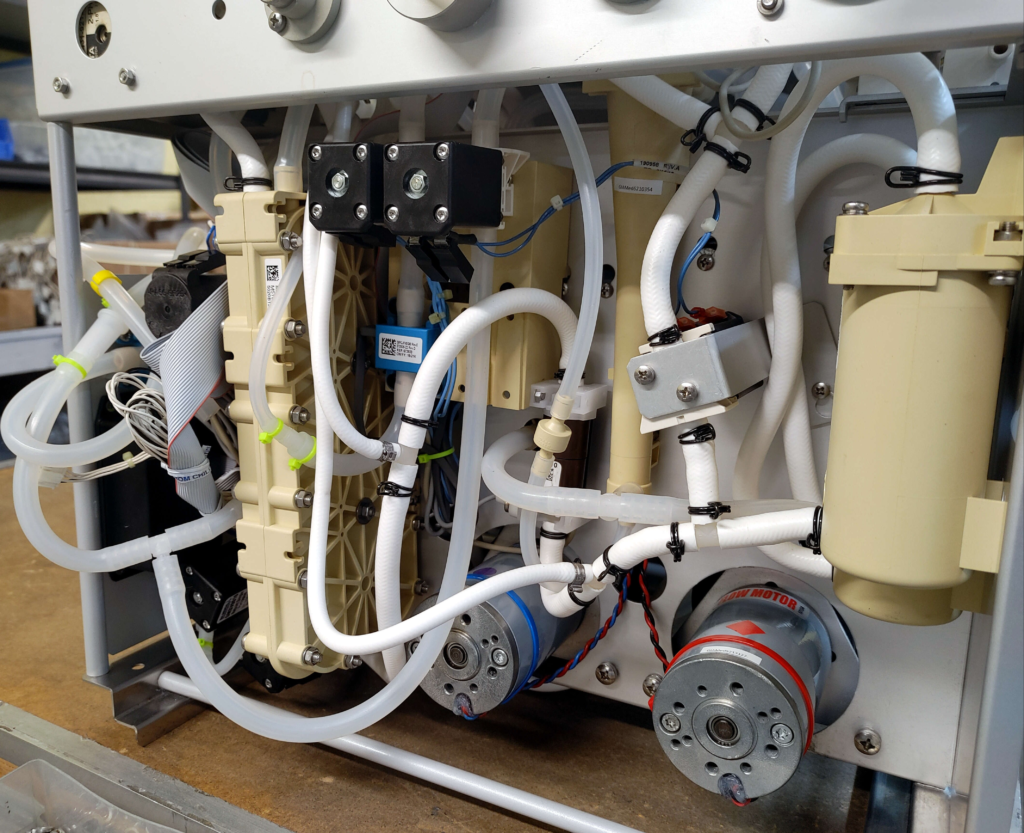Kidney failure is a serious condition that can result from a variety of factors, including diabetes, high blood pressure, and certain genetic disorders. When the kidneys fail, they are no longer able to filter waste and excess fluid from the blood as effectively as they should. This can lead to a buildup of toxins in the body, which can cause a variety of health problems, including nausea, vomiting, weakness, and even coma or death.
Dialysis is an important treatment for patients with kidney failure, as it helps to remove the waste and excess fluid from the blood. Hemodialysis is the most common type of dialysis, and it involves using a machine called a dialysis machine to filter the blood. During hemodialysis, the patient’s blood is removed from their body, filtered through the machine, and then returned to their body.

The dialysis machine works by passing the patient’s blood through a semipermeable membrane, which separates the waste and excess fluid from the blood. The membrane is designed to allow small molecules, such as waste products and excess fluid, to pass through, while retaining larger molecules, such as proteins and blood cells, in the blood. The waste and excess fluid are then removed from the body through a special fluid called dialysate, which is introduced into the machine and then discarded.
Peritoneal dialysis is a less common type of dialysis, and it involves using the patient’s own abdominal lining (peritoneum) to filter the blood. During peritoneal dialysis, a sterile fluid called dialysate is introduced into the abdominal cavity through a catheter. The peritoneum acts as a natural semipermeable membrane, allowing waste and excess fluid to pass through it and into the dialysate. After several hours, the dialysate is removed from the body, taking the waste and excess fluid with it.
Both types of dialysis can be done in a hospital or at home, depending on the patient’s situation and preferences. Hemodialysis is usually done three times a week for three to four hours at a time, and is most frequently done in a dialysis clinic or inpatient dialysis unit dedicated specifically to dialysis patients. While peritoneal dialysis is usually done four to six times a day, with each session lasting several hours and the dialysis machine travels to the patient in the hospital unit they are in, most commonly an ICU unit.
As a clinical engineering technician, you may be responsible for maintaining and troubleshooting the dialysis machines used in hospitals and clinics. It is important to be familiar with the equipment, as well as the procedures and protocols for dialysis, in order to ensure that patients receive the best possible care. You may also be responsible for monitoring patients during dialysis, and for responding to any emergencies or complications that arise.
How does a Dialysis Machine Work
A dialysis machine is a complex medical device that is used to filter waste and excess fluid from the blood of patients with kidney failure. Here is a brief overview of how a dialysis machine works:
- Blood access: To begin the process, a healthcare provider must first create access to the patient’s bloodstream. This is usually done by inserting two needles into a vein in the patient’s arm – one to draw blood out of the body and the other to return the filtered blood back to the body.
- Blood Pumping: Once access has been established, the dialysis machine pumps the patient’s blood out of their body and through a series of tubes that lead to a dialyzer.
- Dialyzer: The dialyzer is the key component of the dialysis machine. It is made up of a series of hollow fibers that are designed to filter waste and excess fluid from the blood. The fibers are semi-permeable, which means they allow certain substances to pass through while blocking others.
- Dialysate: At the same time, the machine pumps a special fluid called dialysate into the dialyzer. The dialysate is designed to mimic the composition of healthy blood and helps to draw waste and excess fluid out of the patient’s bloodstream and into the dialysate.
- Waste and Excess Fluid Removal: As the patient’s blood flows through the dialyzer, the waste and excess fluid pass out of the blood and into the dialysate, which is then discarded. The clean blood is then returned to the patient’s body through the second needle.
- Monitoring: Throughout the dialysis process, the machine carefully monitors the patient’s blood pressure, heart rate, and other vital signs to ensure that the patient remains safe and comfortable. Any issues that arise during the treatment are immediately addressed by healthcare providers.
- Completion: The dialysis treatment typically lasts several hours, depending on the patient’s needs. Once the treatment is complete, the needles are removed from the patient’s arm, and they are free to go about their day.
In summary, a dialysis machine works by pumping the patient’s blood out of their body, through a dialyzer that filters out waste and excess fluid, and then returning the clean blood back to the patient’s body. The process is carefully monitored to ensure the patient’s safety and comfort throughout the treatment.
Critical Dialysis Machine Components
Blood Pump: The blood pump is an electromechanical device that propels the patient’s blood through the dialysis circuit at a controlled flow rate. It is typically driven by a stepper motor and controlled by a microprocessor-based system that regulates the pump’s speed and flow rate.
Dialysate Delivery System: The dialysate delivery system is responsible for mixing and delivering the dialysate solution to the dialyzer. The dialysate solution is composed of purified water and electrolytes, and is adjusted to mimic the ionic composition of healthy blood.

Blood Pressure Monitor: The blood pressure monitor is a non-invasive device that measures the patient’s arterial blood pressure during the dialysis treatment. It utilizes a pressure transducer and a cuff or sensor to measure blood pressure and detect hypotensive or hypertensive events.
Blood Leak Detector: The blood leak detector is a safety device that monitors the blood circuit for any leaks or breaches. It utilizes optical or conductivity sensors to detect the presence of blood outside the dialysis circuit and initiates an alarm or automatic shutdown in the event of a blood leak.
Control System: The control system is a microprocessor-based platform that manages the various functions of the dialysis machine, including the blood pump, dialysate delivery system, blood pressure monitor, and blood leak detector. It utilizes real-time feedback from sensors and patient data to regulate treatment parameters and ensure optimal patient outcomes.
